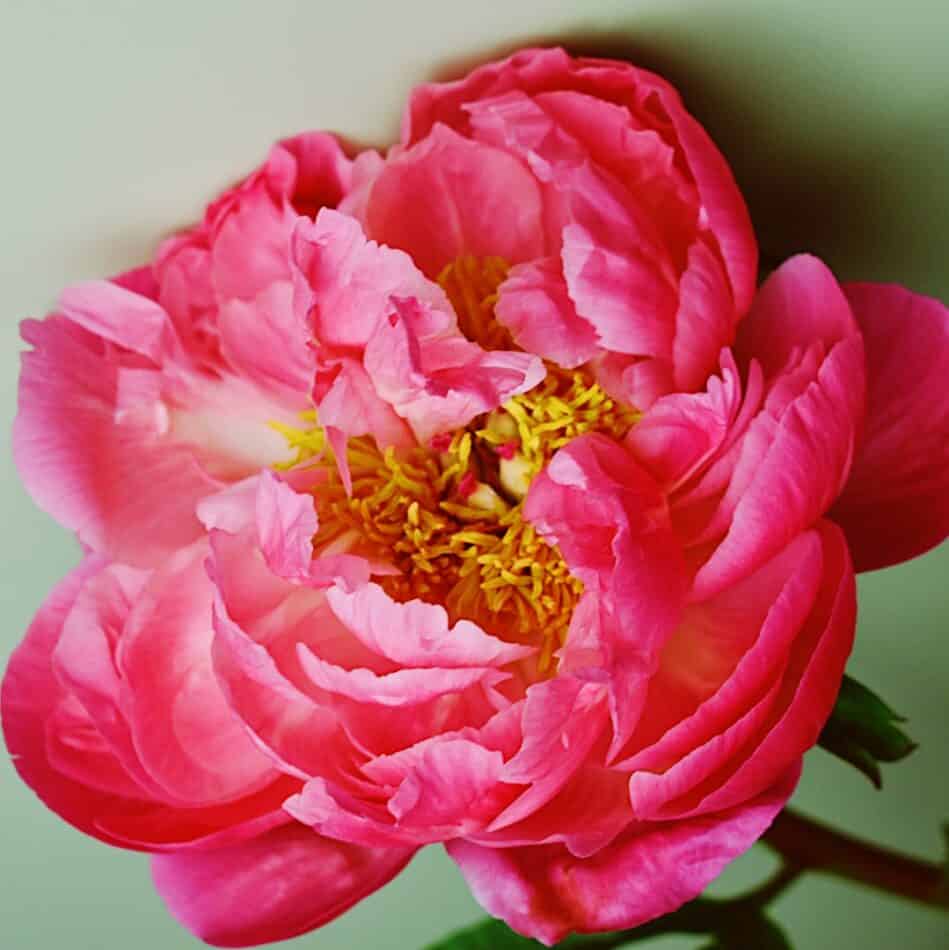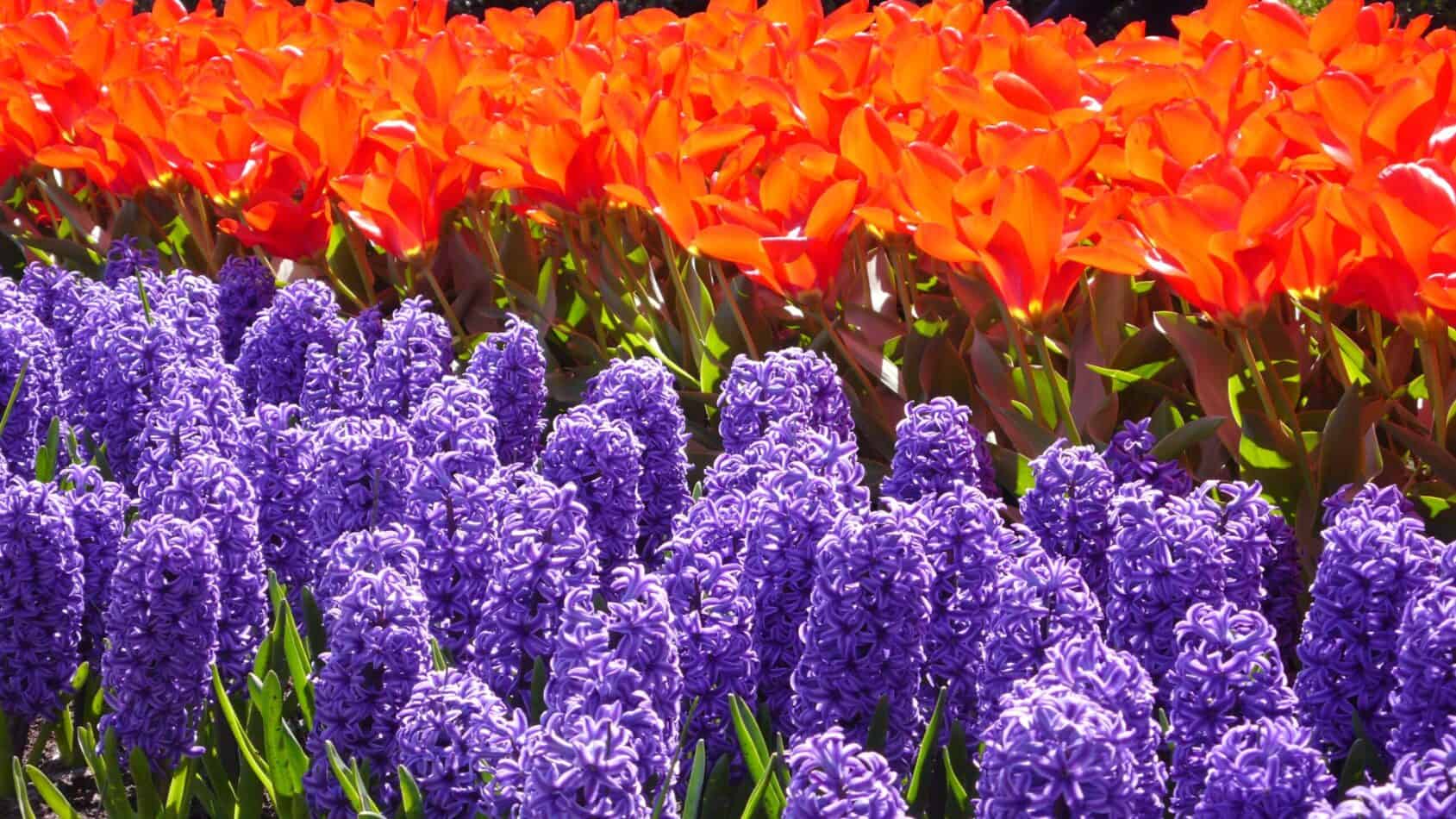Platycodon grandiflorus, or Balloon Flower, is a stunning perennial herbaceous flower that produces plentiful bell-shaped blossoms of either deep blue or light pink. Its name, Platycodon grandiflorus, derives from the Greek words platys and kodon, meaning “broad bell”. These extraordinary blooms emerge from balloon-like buds in November and December, adding an extra splash of colour to colder months and they look ideal in cottage gardens and beds.
Family
Platycodon grandiflorus, which is also commonly known as balloon flower, is a member of the Campanulaceae (The Bellflower) family. The Campanulaceae family is a large family of flowering plants containing 13 genera with about 270 species.
Plant type
Platycodon grandiflorus is a herbaceous perennial, meaning that it grows each year from newly established root/s rather than from seed or stem cuttings. Many herbaceous perennials will flower following a period of dormancy in the winter months before growing again in the warmer months of the year.
Mature size
The mature size of a Platycodon grandiflorus usually grows to be around 15-20 inches tall and 18-24 inches wide. The size of the plant can vary depending on the specific variety and the amount of care it receives over the growing season.
Sun exposure
Platycodon grandiflorus is best grown in a location that receives full sun. While it can tolerate light shade, it will generally not flower as much if it does not receive at least 6 hours of direct sunlight per day during the growing season.
Soil type
Platycodon grandiflorus prefers a well-drained, fertile soil. It should be cultivated in a location that is not prone to standing water. A soil that is slightly acidic with a pH of 6 to 7 is preferred by this flower.
Soil pH
Platycodon grandiflorus prefers a soil that is slightly acidic with a pH of 6 to 7. It is important to test the pH of the soil before planting to ensure that it is within the optimal range.
Bloom time
The blooms of Platycodon grandiflorus usually appear in late spring to early summer. Depending on the variety and growing conditions, the bloom time may differ.
Flower color
The flowers of Platycodon grandiflorus come in either a deep blue or light pink color. Some varieties may also be colored purple, white, or even a mix of colors.
Hardiness Zones
Platycodon grandiflorus can be grown in the hardiness zones of 4-9 in the U.S. and in the hardiness zones of 7-10 in Canada. It is important to consult with a local expert to determine the best zone for your area.
Native area
Platycodon grandiflorus is native to parts of Asia, including China, Korea, and Siberia. It can now be found growing in many countries throughout the world.
How to plant
Platycodon grandiflorus should be planted in fertile, well-drained soil in an area that receives full sun for at least 6 hours a day. If the soil is slightly acidic with a pH of 6 to 7, the flower will thrive. It should also be planted in groups for best effect, as this will ensure an even distribution of stem growth and flower production. The plants should be planted at least fifty centimeters apart and eighteen centimeters deep. As they enjoy a moist soil, they should be watered regularly and in dry periods. Lastly, be sure to resist popping their ‘balloon-like’ buds as this can cause damage to the plant.
Meaning and symbolism
The Balloon Flower has multiple meanings in different cultures and often symbolizes different things in different places. For example, in Japan, it is often associated with good luck, particularly for those who are approaching new stages in life, such as a change in job or moving into a new home. In some Buddhist cultures, it is believed that a balloon flower blooming marks a moment of spiritual enlightenment. Lastly, balloon flowers may also be used to indicate strength and perseverance, as the bud takes a very long time to open and does not give up easily.
History, mythology, and religious significance
The Balloon Flower is a fairly new addition to western flower beddeding, but it has long had a place in eastern cultures. Originating in parts of China, Korea and Russia, it was traditionally used in various medicines, some of which are still used today. Symbolically, it has long been associated with determination, strength, and overcoming adversity, reflecting the way in which the bud slowly opens up despite any external forces. In some Buddhist cultures, it holds spiritual significance, marking a moment of enlightenment.
Flower varieties and their defining characteristics
Platycodon grandiflorus is an incredibly versatile flower, with multiple varieties displaying a different range of colors, sizes and shapes. Some of the most popular varieties include Platycodon grandiflorus ‘Fuji Blue’ and Platycodon grandiflorus ‘Sentimental Blue’, which both grow beautiful bell-shaped blooms of deep blue, and Platycodon grandiflorus ‘Fuji White’ and Platycodon grandiflorus ‘Sentimental White’, which produce lovely white blooms. Furthermore, there is also the dwarf variety of Platycodon grandiflorus ‘Fairy Snowcap’ which produces stunning, double white blooms on shorter stems.
How to pot and repot
When potting Platycodon grandiflorus, it is important to choose a pot that is only slightly larger than the rootball – approximately 2-3 inches larger in diameter will suffice. The pot should have adequate drainage holes, as it is important that the roots are not exposed to water-logged soil. Then, fill the pot with a potting mixture and place the plant in the center. Gently firm down the surface, making sure to leave some space around the roots. Water the plant thoroughly and place it in a bright location.
When repotting Platycodon grandiflorus, it is best to do so in the spring before new growth emerges. Remove the plant from its pot and remove any dead or dying roots. Place the plant in a new, larger pot that is a few inches bigger in diameter than the previous pot. Fill the pot with a potting mixture and water thoroughly. Finally, place the plant in a bright location, making sure not to expose to too much direct sunlight.
How to prune
Platycodon grandiflorus should be pruned twice a year – once in late summer and once in late winter or early spring. The late summer pruning should focus on removing any dead flowers or stems. This will promote re-growth and help the plant to remain healthy and look aesthetically pleasing. After flowering, stems should be cut back to about 10 cm above ground level. The late winter or early spring pruning should focus on removing any stems that are weak or damaged, as well as any congested stems. Again, this will encourage new growth and promote a lush and healthy plant.
How to propagate
Propagating Platycodon grandiflorus is relatively easy and can be done in three different ways – by seed, by division, or by stem cuttings. To propagate by seed, sow the seed in a light potting mixture in the fall. Cover the seed lightly with the mixture and place it in a bright indoor area, making sure not to expose it to too much direct sunlight. To propagate by division, carefully dig up the plant in early spring, taking care not to damage the roots. Carefully separate the plant into two or more sections so that each has a few growth buds. To propagate by stem cuttings, cut a stem that has a few growth buds and a piece of the root attached to it. Place the stem and attached root in a container filled with potting mixture, making sure to firm it down gently.
Common pests and diseases
Platycodon grandiflorus is vulnerable to a range of pests and diseases, including aphids, caterpillars, slugs, root rot, and crown rot. The best way to keep pests and diseases at bay is to practice good garden hygiene. This includes regularly removing dead or decaying plant matter, disposing of this material in an appropriate manner, and not overcrowding near-by plants. Additionally, ensuring that the plant is well-watered and is not exposed to too much direct sunlight will help to minimize the risk of pests and diseases. Finally, inspecting the plant regularly and using a suitable pesticide or an organic solution to treat any infestations or infections is recommended.
Three frequently asked questions about Platycodon grandiflorus.
- How do you care for a Platycodon grandiflorus?
Caring for a Platycodon grandiflorus is relatively easy but it does require some regular maintenance. It should be planted in well-drained, fertile soil in an area that receives at least 6 hours of sun per day. It should also be watered regularly and be kept away from standing water. Finally, it should be pruned twice a year and inspected for any pests and diseases. - When is the best time to plant Platycodon grandiflorus?
The best time to plant Platycodon grandiflorus is in the spring when temperatures are starting to warm up and before the onset of flowering. - What is the average lifespan of Platycodon grandiflorus?
The average lifespan of Platycodon grandiflorus is five to seven years, although with proper care and maintenance this can be extended.
Table fact sheet (with data)
| Balloon Flower | Platycodon grandiflorus |
|---|---|
| Family | Campanulaceae |
| Plant Type | Herbaceous Perennial |
| Mature Size | 15-20 inches tall and 18-24 inches wide |
| Sun Exposure | Full Sun |
| Soil Type | Well-drained, Fertile Soil |
| Soil pH | 6-7 |
| Bloom Time | Late Spring to Early Summer |
| Flower Color | Deep Blue or Light Pink |
| Hardiness Zones | 4-9 (US), 7-10 (Canada) |
| Native Area | Parts of Asia, including China, Korea, and Siberia |
What we love from Amazon this week
Buy these wonderful flowers directly from Amazon:















